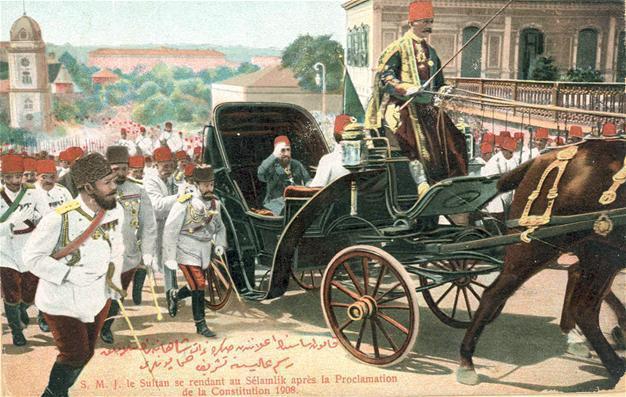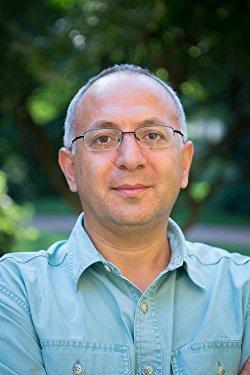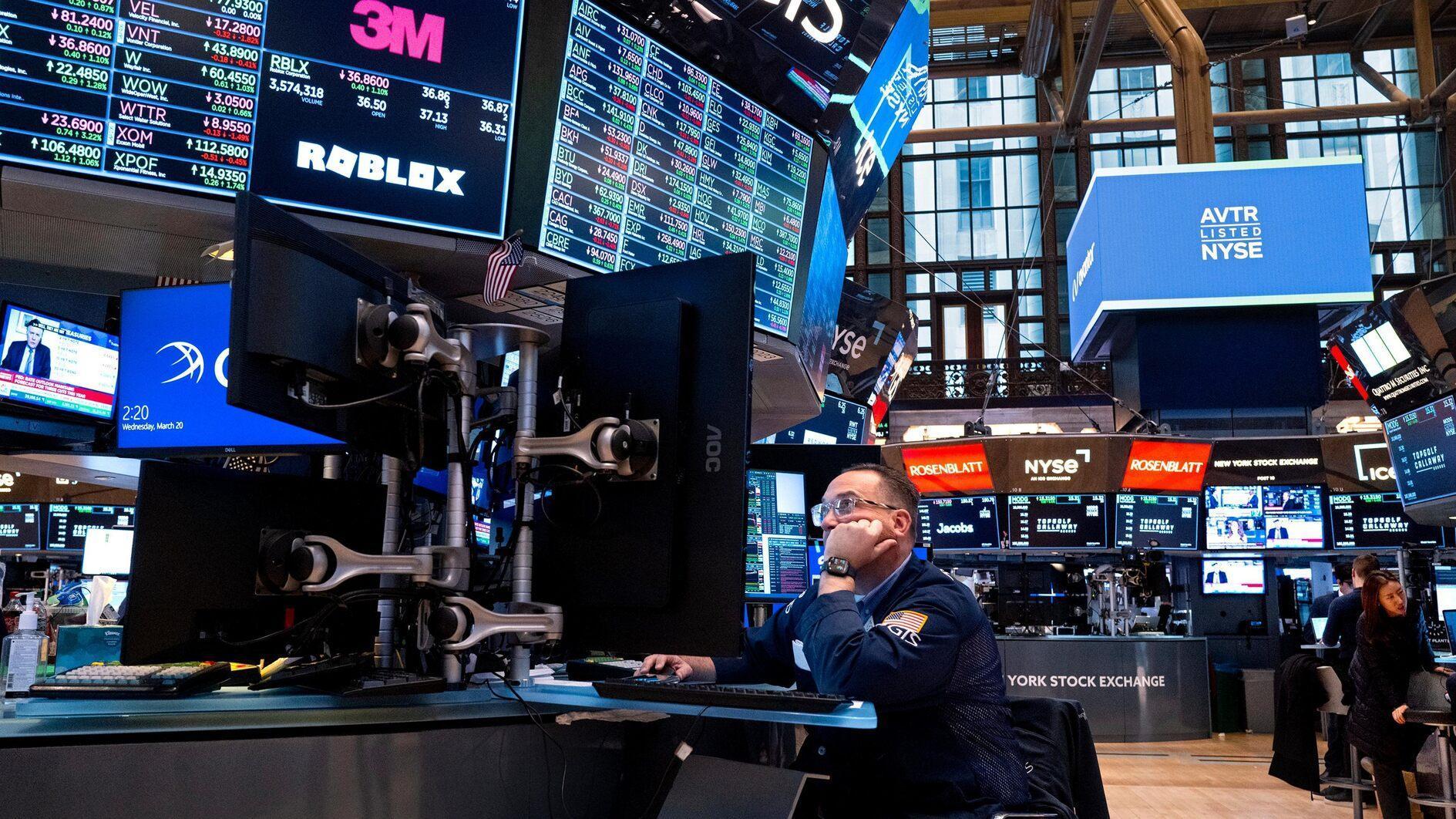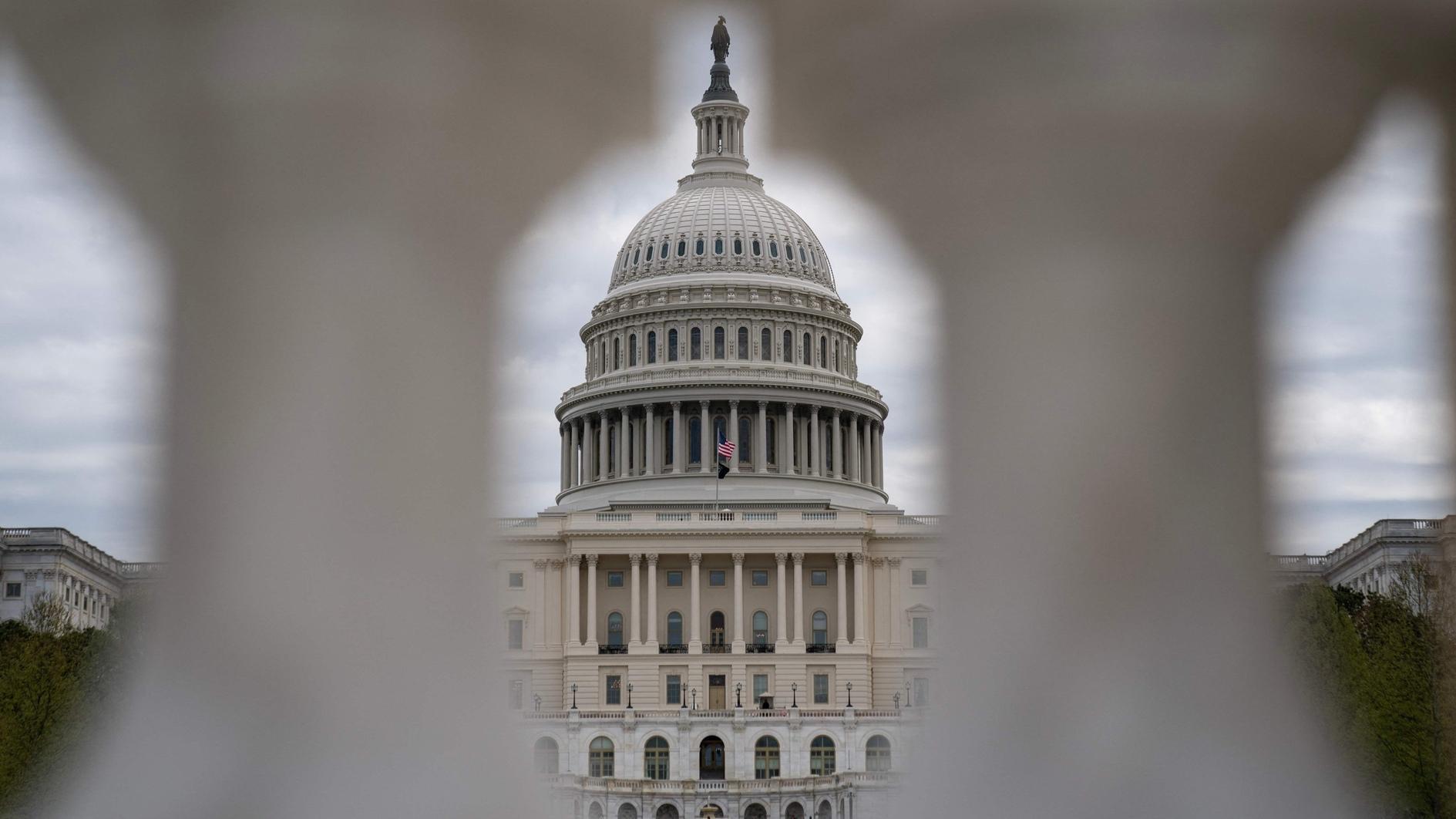INTERVIEW: Cemil Aydin on the ‘idea of the Muslim world’
William Armstrong - william.armstrong@hdn.com.tr

A postcard showing Ottoman Sultan Abdülhamid II on the way to Yıldız Palace in Istanbul.
Roughly one fifth of people now living are Muslims. Their societies are located in every corner of the globe and vary in language, ethnicity, political ideology, nationality, culture, and wealth. Yet we tend to imagine this 1.5 billion people, despite such diversity, as a cohesive and united whole, defined above all by their Muslim identity. In a bracing new book, “The Idea of the Muslim World,” University of North Carolina at Chapel Hill Associate Professor Cemil Aydin challenges this notion. He describes the idea of the “Muslim world” as an “ahistorical illusion,” which originated in the late 19th century with the rise of European imperialism and the response by Muslim intellectuals. Ironically, the idea of a distinct “Muslim civilization” with definitive, immutable characteristics in all four corners of the world became cherished by Islamophobes and pan-Islamists alike. This remains the case today in fevered debate about “Islam and the West” and the “clash of civilizations.”
In a bracing new book, “The Idea of the Muslim World,” University of North Carolina at Chapel Hill Associate Professor Cemil Aydin challenges this notion. He describes the idea of the “Muslim world” as an “ahistorical illusion,” which originated in the late 19th century with the rise of European imperialism and the response by Muslim intellectuals. Ironically, the idea of a distinct “Muslim civilization” with definitive, immutable characteristics in all four corners of the world became cherished by Islamophobes and pan-Islamists alike. This remains the case today in fevered debate about “Islam and the West” and the “clash of civilizations.”Aydin spoke to the Hürriyet Daily News about his book. The conversation has been edited for clarity.
Could you start by summarizing in broad terms the argument that you make.
The book focuses on the way that racialization of Muslims in Europe and America, from imperial times in the late 19th century to the present, relies on this notion of Muslims’ geopolitical unity based on their religious identity. The racialization of different non-European societies happened for Asians, Africans and many other groups, and the late 19th century age of empire is also the age of race and racial thinking. The book explains how being Muslim became a racial category. The Europeans came to perceive Muslims as one racial group via their religion, similar to Jews and Hindus. But unlike the Jews, who were seen as an internal enemy, Muslims were seen as an external political threat with a large population and a large geopolitical strength.
The book also focuses on the question of why this racial thinking about Muslims, inherited from the imperial era, did not fade away with decolonization. On the contrary it came back during the Cold War. There was a second repetition of the racialization of Muslims in the West, inheriting the template from the imperial era but using it for very different political purposes. We're still dealing with this. The book starts with Barack Obama's speech to the "Muslim world" in Cairo in 2008, showing how that speech actually relies on this racialized notion of the existence of the Muslim world: The idea that Muslims from Senegal and Nigeria to Morocco to Indonesia are primarily Muslims above all else, that defines them.
The book also shows how pan-Islamists and Muslim modernists and 1980s political Islamists similarly embraced the notion of the Muslim world and linked it to earlier notions of the ummah. They did it for counter-imperial or geopolitical purposes, but while doing that they also established a symbiotic relationship between pan-Islamism and European racism toward Muslims.
I want to invite readers to rethink their belief in the idea of a Muslim unity or Muslim world. This idea is an essential basis of not seeing them as individuals, or people with citizenship or claims, but seeing them as representatives, tools, pawns or extensions of a dangerous geopolitical bloc. That affects the rights of Muslims in Europe and America. It also encourages a kind of posturing whereby any person who wants to be the “leader of the Muslim world” now appeals for Muslims in Europe, for example, to act as an infiltrating tool of an expanding Islamic world.
You describe how the idea emerged in the late 19th century and how it was really a break with ideas that had gone for centuries before.
The book struggles against the powerful narrative of the clash of civilizations, or Islam vs. the West. It reminds us that this story of an eternal conflict between an Islamic and a Christian world - both imaginary entities - relies on a fiction. The assumption is that from the time of the Prophet Muhammad and beyond there was always a “conflict between the Muslim world and the rest.” But for a millennium, Muslims have always lived in different imperial settings in close proximity with non-Muslims. This global imagination didn't really exist. Muslim dynasties were primarily imperial - Ottomans, Mughals, Safavids, for example - and they didn't think of themselves as belonging to a global geopolitical unity in relation to an enemy.
The term "ummah" was also used for a very different religious context. The Prophet Muhammad said he would gather his ummah in the hereafter, but that ummah just means pious people across many generations. It doesn't say the ummah is marked on any map with a clear enemy. So the book reminds people that in the 15th, 16th and 17th centuries the idea of the "Muslim world" wouldn't have made sense to people. It is only in the late 19th century that we see the origins of the term.
One chapter of the book suggests that the first response to European imperial expansion was not pan-Islamism, which should also give a clue about the importance of empires. When Napoleon was in Egypt, or when the French were first in Algeria, or even with the Indian Revolt in 1857 against the British, we don't see global notions of Muslims solidarity against Christian empires. We see the first examples of the notion of an Islamic world emerge in the 1870s and 1880s. This has something to do with the connectivity of the Muslim populations through steamships, telegraphs and printing in an imperial context.
You describe how there was a kind of symbiosis. With the encounter between expanding European empires and often subject Muslim populations the idea of the Muslim world took on momentum of its own. Both sides used it for their own purposes.
As the British or French went around the world, from Africa to Asia, to establish trade colonies and imperial possessions, there was an external inscription of Muslimness as an identity marker. For whatever the reason, Muslimness was the primary marker of European observers looking at different, diverse societies, even though the Ottoman Empire had no connection to Nigeria or Senegal and little connection with parts of India. While this was happening, gradually empowered Muslim publics embraced this externally inscribed idea of the Muslim world in order to "talk back" against European racism.
This is a very important turning point that probably happened at the same time for Asia, Hindus and Jews. There was an 1880s generation of well-educated Muslim intellectuals who could print, publish, travel in steam ships, who were better connected and followed the news that the telegraph empowered. They were discontented about empire but were not necessarily imagining a post-imperial world yet; they were interested in improving the position of Muslims within empires and rejected European racial discourses of Muslim inferiority. This group - Jamal al-Afghani, Syed Ahmad Khan, Said Amir Ali, the founding fathers of Muslim modernism - also thought that the idea of a Muslim world with its civilization and universal religious values was a good way to tell European imperial elites that their racism was irrational, illogical and false. The idea of Islam as a "world religion" or civilization developed the notion that Muslims were connected from Senegal to Morocco, from Istanbul to Delhi. It also gave Muslims a sense of empowerment and collective bargaining, to critique the racializing empires.
One fascinating example that refers to all of this was the German Empire's later push during the First World War for the Ottoman Empire to declare jihad as a strategic step. Kaiser Wilhelm said he wanted to provoke “the whole Mohammedan world” into a “wild revolt” against the British Empire. This kind of thing had never been done before. Could you talk about what this all meant and what the results were?
Imperial rationality ended up being overwhelmed by geopolitics and racial thinking. Kaiser Wilhelm thought, "The Islamic world exists under the British Empire. But that might be the weak spot of the British." He thought they should provoke the Muslims to rebel against the British. Instead of seeing the Islamic world as a baby of Ottoman-British cooperation, the Young Turks and the Germans during the First World War thought they could basically ask that Islamic world to revolt. Initially, Indian Muslims were very worried about this invitation because they insisted that they could be loyal subjects of the British Empire and could also show their respect and religious loyalty to the caliph. The last thing they wanted was a war between the Ottomans and the British. They immediately wrote back to say this jihad declaration was unacceptable.
The irony comes in the next chapter, with the collapse of the imperial system after the war. The bigger issue became the British Empire's betrayal of its promises to Muslims. Anti-colonialism became stronger among Muslims in the British Empire because they felt the Balfour Declaration, the Sykes-Picot Agreement, and the betrayal after the Arab Revolt were all violations of British promises to Muslim subjects.
Thinking specifically about the Middle East in this era, the media today often traces current trouble in the region back to the so-called “artificial” nation states that emerged after the fall of the Ottoman Empire 100 years ago. This seems very simplistic, imagining that the region prospered as an organic and unified whole before the imposition of modern nationalist ideologies.
I'm very disturbed how this narrative has emerged that "the end of the Ottoman Empire was the end of Muslim unity." The people who say that are just focusing on the tragic history of the Arab Middle East after the end of the Ottoman Empire. It's true that for the Arab Middle East there is more division; at least large parts of Iraq, Syria, Jordan, Palestine and the Hijaz were connected under the Ottomans. But people forget that bigger partitions were actually the separation of Turks and Greeks and the removal of the presence of Armenians in Anatolia. People who remember the end of the Ottoman Empire as the end of Arab unity never talk about those examples, even though they are actually more important turning points. The end of Ottoman cosmopolitan is actually a bigger story, which tends to get completely lost.
The second important point is that during the First World War the Ottoman Empire was not even the biggest empire ruling over Muslims. In fact that was the British Empire. So the narrative that Muslims were united and imperialism divided them is not true. They were always divided among empires and kingdoms throughout history. Temporarily the British unintentionally united half of the Muslims around the Indian Ocean, and after the First World War Britain actually made connections between Arabs in the Middle East and in India through empire in London. But the British Empire suffered great damage to its legitimacy and had great difficulty convincing Muslims that this empire was fair to them.
The narrative that the Sykes-Picot Agreement divided the united “ummah” is not true. It is pushed by ISIS, which declares that it will unite Syria and Iraq to "eliminate Sykes-Picot." But Sykes-Picot is just one of many factors that led to the current borders in the Middle East. The Sykes-Picot Agreement was never actually realized. Other things happened and it was actually much more complicated.
A later key instance was during the Cold War, when the U.S. concluded that the world’s Muslims could be an important ally against the Soviet Union, based on assumptions that they formed a coherent bloc with shared fundamental characteristics. This thinking led to an unofficial and indirect alliance with Islamists in various parts of the world during the Cold War, most infamously with the Taliban in Afghanistan in the 1980s.
There are similarities and intellectual continuities between the earlier and the latter kind of "Muslim world." After World War II the idea faded away, but it ended up being picked up by Saudi Arabia empower itself first against Egypt’s Gamal Abdel Nasser and then to make Saudi Arabia a great regional power, in alliance with the United States. So Saudi King Faisal appears like Ottoman Sultan Abdülhamid II, 80 or 90 years later, establishing new networks and thinking that a new Muslim world bloc could emerge at the United Nations.
He's not thinking imperially, but he wants to make Muslim countries emerge as a force in international politics through the U.N. Muslim internationalism against the Nasserite vision of Third World pan-Arab and socialist internationalism. Eventually a crisis around the Arab-Israeli war, Camp David, the Iranian Revolution the Soviet invasion of Afghanistan gave a completely different idea of the "Muslim world" in the postcolonial context.
You also talk about ISIS in the book. ISIS could actually be a very good example of how this fantasy of the “Muslim world” has gotten out of hand. You write that “its ideology relies on an ahistorical caricature of the caliphate, one that seems derived more from Islamophobic stereotypes than actual Abbasid or Ottoman practices.” Could you just expand on this a little.
I try to indicate this problem of historical amnesia, how both Muslims and non-Muslims create these stories about Muslim politics and history that have become so dehistoricized and abstract. They imagine that there is a direct connection between early Muslim societies after the Prophet Muhammad and modern Muslim politics. It is as if 1,400 years of historical experience doesn't mean anything. It is as if the experiences of Akbar the Great in India or Süleyman the Magnificent in the Ottoman Empire, or even the 19th century Ottoman Tanzimat reforms, mean nothing. They instead believe that to be a good Muslim you have to go back to early Islam. But this is a completely new idea. If ISIS ever reads about the Ottoman sultans they would clearly declare them infidels. Abdülhamid II, for example, who many remember as the pious caliph who created Muslim solidarity, was a fan of European opera music.
* Follow the Turkey Book Talk podcast via Twitter, iTunes, Stitcher, Podbean, Acast, or Facebook.
















